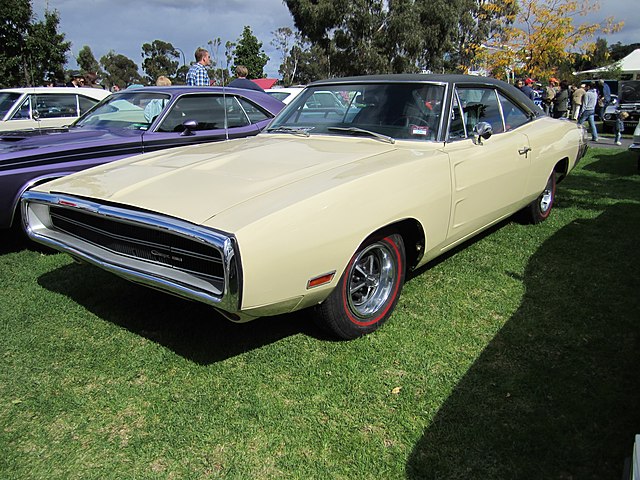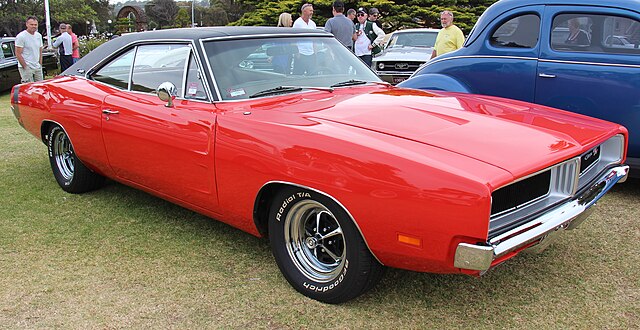
The second generation Dodge Charger, produced from 1968 to 1970, is one of the most iconic and revered muscle cars in automotive history. This era of the Charger is celebrated for its distinctive styling, powerful performance, and its significant impact on American car culture.
The following sections delve into various aspects of the second-generation Charger, exploring its development, design, performance, cultural impact, and notable models.
Introduction to the Second Generation

Evolution from the First Generation
The Dodge Charger first entered the market in 1966 as a mid-size sports car, competing with vehicles like the Ford Mustang and Chevrolet Camaro. However, it was the second generation, introduced in 1968, that truly cemented the Charger’s reputation.
This generation featured a complete redesign, both aesthetically and mechanically, transforming the Charger into a true muscle car that captured the attention of enthusiasts across the nation.
Distinctive Design Features
The second-generation Charger is renowned for its Coke-bottle design and the “flying buttress” rear window which provided a unique and aggressive look. This was a departure from the more conservative styling of the first generation. The car’s design included hidden headlights and a full-width tail lamp panel, which became signature elements that contributed to its aggressive and sleek appearance.
Impact on Dodge’s Brand Image
The redesign of the Charger was a strategic move by Dodge to boost its performance image. The new model not only attracted younger buyers but also significantly boosted the brand’s sales. This generation of the Charger helped Dodge in positioning itself as a key player in the muscle car segment.
Performance and Engineering

Engine Options and Power
The 1968-1970 Dodge Charger offered a range of powerful V8 engines, including the legendary 426 Hemi and the 440 Magnum. These engines could deliver impressive performance figures for the era, with the 426 Hemi producing 425 horsepower. These powertrains were a major selling point, drawing in buyers looking for high-performance vehicles.
Transmission and Handling
Buyers could choose from several transmission options, including a three-speed automatic, a four-speed manual, and towards the end of the generation, a five-speed manual. The Charger was built on Chrysler’s B-body platform, which was known for its robustness and relatively good handling capabilities for such a large car.
Innovations and Enhancements
Throughout its three-year run, the Charger saw continual enhancements in performance and drivability. Improvements in suspension and braking systems were introduced to handle the power more effectively and provide a safer and more comfortable driving experience.
Iconic Models and Variants

The 1968 Dodge Charger R/T
The introduction of the Charger R/T (Road/Track) in 1968 brought a high-performance model to consumers that was equipped with the 440 Magnum as standard, with the option of the 426 Hemi. The R/T version highlighted the Charger’s dual nature as a comfortable grand tourer and a potent performance machine.
The 1969 Charger Daytona
In 1969, Dodge introduced the Charger Daytona, a special edition built for NASCAR. The Daytona featured an aerodynamically enhanced body with a massive rear wing and extended nose cone. It was one of the first cars designed aerodynamically to dominate super-speedways, which it did by winning multiple races.
Limited Production and Special Editions
Other notable variants include the 500 and the SE (Special Edition). The Charger 500 was designed to be a more aerodynamic version of the standard Charger to improve high-speed stability on race tracks, while the SE was geared towards buyers seeking luxury along with performance.
Cultural Impact and Legacy

Representation in Media
The second-generation Charger gained fame on the silver screen and became a cultural icon, most notably as the General Lee in the television series “The Dukes of Hazzard.” Its appearances in movies and TV shows helped solidify its image as a symbol of rebellion and freedom.
Collectibility and Enthusiast Community
Today, the second-generation Charger is a highly sought-after collector’s item, with restored and well-maintained models fetching high prices at auctions. The car also enjoys a dedicated following, with numerous clubs and events celebrating its legacy worldwide.
Influence on Later Models
The success and popularity of the second-generation Charger influenced future designs of the Charger and helped ensure its continuation as a staple in Dodge’s lineup. The modern Charger, while a four-door sedan, still draws design inspiration and performance heritage from its famous predecessor.
Conclusion
The Dodge Charger of 1968-1970 remains a pinnacle of American automotive design and performance. With its powerful engines, striking design, and cultural significance, it stands as a testament to the era of muscle cars and continues to captivate car enthusiasts around the world.
Its legacy is evident in the lasting enthusiasm for and appreciation of this classic American muscle car, a true icon of its time.
